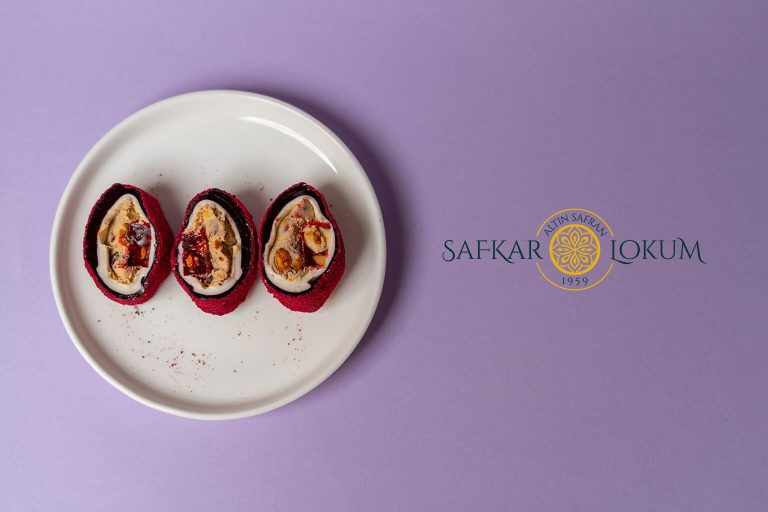In our facilities with a monthly production capacity of 180 tons, we meticulously manufacture our products with the highest hygiene and quality standards while faithfully preserving traditional recipes.
Our Products
-

Clotted Cream and Almond Cream Rolled Turkish Delight
-
 S-134
S-134Special Almond Cream Rolled Turkish Delight
-
 S-173
S-173Drop Chocolate Tiramisu Almond Rolled Turkish Delight
-
 S-110
S-110Pistachio Chocolate Brownie Rolled Turkish Delight
-
 J-105
J-105Mint Turkish Delight
-
 F-114
F-114Sliced Hazelnut and Apple Hazelnut Wicked Turkish Delight
-
 S-182
S-182Coconut Cream Hazelnut Rolled Turkish Delight
-
 J-117
J-117Fruit-Flavored Bird’s Delight
Safkar Blog

Which Is the Best Turkish Delight Brand?
When it comes to Turkish delight one of the most beloved traditional sweets in Turkish culture few names shine as brightly as Safkar Lokum. Produced in…

How to Store Turkish Delight? Golden Rules for Freshness
How to store Turkish delight is an important question for both individual consumers and businesses that buy in bulk. Turkish delight has been one of the…

What Are the Types of Turkish Delight? Which Variety Fits Which Market?
What are the types of Turkish delight? This is one of the most common questions asked by wholesalers and export companies. Turkish delight is not only…
About Us
With a journey that began in Istanbul in 1945, İsmail Hamamcı had the opportunity to work with the most skilled masters of the time to gain expertise in Turkish delight production. Despite his young age, his remarkable talent and diligence quickly distinguished him, granting him the privilege of learning exclusive recipes, refined techniques, and traditional production secrets from the masters serving in the palace kitchens of Istanbul.
After reaching the level of mastery, İsmail Hamamcı returned to his hometown, Safranbolu, and established his first production facility named Karaağaç Şekerleme. In addition to producing Turkish delight, he expanded the product range to include traditional flavors such as halva and jam. He involved his son, Ahmet Hamamcı, in the process, passing down his mastery and knowledge to the next generation. Thus, this legacy became a family tradition, growing stronger over time.









